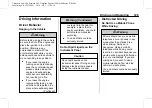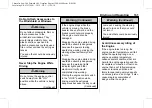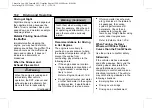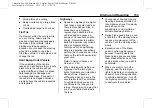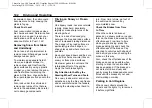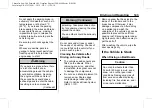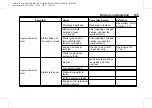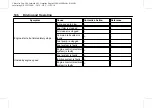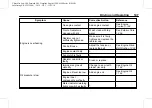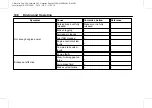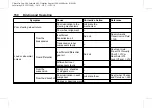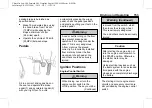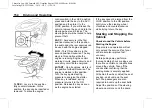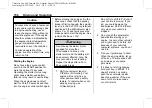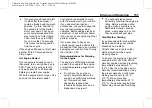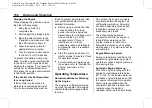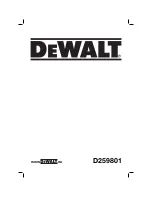
Chevrolet Low Cab Forward 6.0L Gasoline Engine 3500/4500 Series (GMNA-
Localizing-U.S.-12533400) - 2019 - CRC - 11/19/18
Driving and Operating
143
Do not apply the parking brake in
extremely cold weather, such as in
temperatures or at below 0 °C
(32 °F). If you leave the parking
brake applied, the wires and brake
shoes could freeze up, making it
impossible for you to release the
parking brake. Be sure to park the
vehicle in gear.
Be sure to put chocks against the
tires.
Whenever possible, park in a
garage to help prevent parts from
freezing up and to help make the
engine easy to start.
{
Warning
If you park in a place where there
is a lot of snowfall, snow
accumulating around the vehicle
could limit ventilation. Running
the engine with the vehicle in
these conditions could cause
exhaust gases to enter the cabin,
resulting in carbon monoxide
(Continued)
Warning (Continued)
poisoning. Take preventive action
by, for example, clearing the snow
around the vehicle.
You and others could be seriously
injured.
Do not park under trees or under
the eaves of a building. Chunks of
ice could fall on the vehicle if you
park in such a place.
Cleaning the Vehicle after
Driving on Snowy Roads
.
The vehicle speed sensors are
fitted on the wheels. When
removing snow, ice, and other
incrustation, take great care not
to damage the components.
.
Do not use a sharp implement to
remove snow. Sharp edges
could damage rubber parts.
Refer to
.
Remove snow that has stuck to the
inside of the fenders and to the
brake hoses. Otherwise, it may
damage components. After driving
on a salted road, wash the
underside of the vehicle as soon as
possible to prevent the salt from
causing rust. Spraying water under
high pressure is an effective way to
get the salt off.
After washing the vehicle, wipe the
door openings dry.
If the Vehicle Is Stuck
When Driving on Bad Roads
Caution
Do not spin wheels faster than
32 km/h (20 mph) in mud, sand,
snow, ice, or other poor road
conditions. Damage may result
from excessive wheel spinning,
including tire, transmission, and/
or rear axle malfunction.
(Continued)

